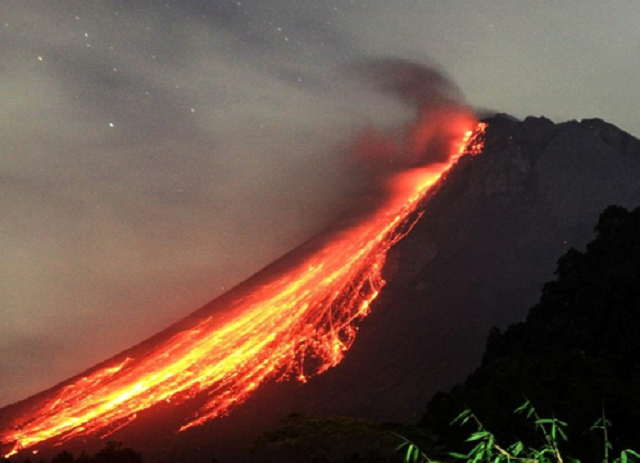Table of Contents
Indonesia witnessed a volcanic eruption as Mount Marapi, located on the island of Sumatra, erupted on Sunday at 2:54 pm local time. The eruption sent a column of ash soaring approximately three kilometers into the sky, according to Hendra Gunawan, head of Indonesia’s Centre of Volcanology and Geological Hazard Mitigation. Fortunately, there have been no immediate reports of damage or casualties resulting from the eruption.
Unveiling the Eruption
The ash column, reaching 3,000 meters above the volcano’s peak, appeared in grey with thick intensity, primarily drifting towards the east, as indicated by Gunawan in an official statement. Notably, the eruption is ongoing, emphasizing the dynamic nature of Mount Marapi.
Alert Levels and Precautionary Measures
Mount Marapi, standing at an elevation of 2,891 meters, currently holds the third-highest alert level in Indonesia’s four-step volcanic alert system. In response to the eruption, authorities have enforced an exclusion zone around the volcano’s crater.
Gunawan issued a directive stating, “Communities around the Marapi volcano and tourists are not allowed to hike the Marapi volcano within a three-kilometer radius from its crater/peak.” This precautionary measure aims to ensure the safety of nearby residents and visitors.
Ash Rain and Impact on Bukittinggi City
Ahmad Rifandi, an official at the Mount Marapi monitoring station, reported that ash rain was observed following the eruption. The ash was reported to have reached Bukittinggi city, the third-largest city in West Sumatra, with a population exceeding 100,000. In light of the ash rain, residents and individuals in the vicinity of Mount Marapi are advised to wear hats, glasses, and masks to mitigate potential health risks.


Mount Marapi: ‘Mountain of Fire’
Mount Marapi, translating to ‘Mountain of Fire,’ holds the distinction of being the most active volcano on Sumatra island. The recent eruption adds to Indonesia’s volcanic activity, contributing to its status as one of the most seismically active regions globally.
The Indonesian archipelago, positioned on the Pacific Ring of Fire, is characterized by high volcanic and seismic activity due to the convergence of continental plates. With nearly 130 active volcanoes, Indonesia consistently grapples with the potential impact of geological events.

